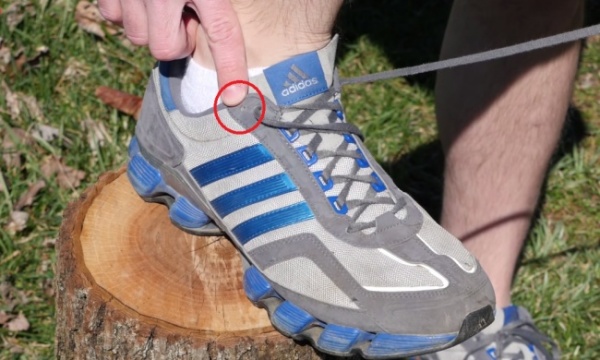Breathing exercises are considered the most effective relaxation techniques. They are also the simplest to perform.
For most people, breathing is an unconscious activity that we take for granted. Most of the time, we practiced shallow breathing; shallow breathing is breathing from the chest, and breathe does not reach the depths of the lungs.
Breathing exercises help our lungs become more efficient at managing oxygen levels. Here are five easy Breathing Techniques to Improve Your Lung Health.
1) Diaphragmatic Breathing
It involves using the stomach, abdominal muscles, and diaphragm while breathing. Diaphragmatic breathing helps the lungs fill more efficiently. During diaphragmatic breathing, feel a stretching sensation in the stomach rather than your chest and shoulders. Diaphragmatic breathing encourages full oxygen exchange and also slows the heartbeat, and can stabilize blood pressure.
Steps to Practice Diaphragmatic breathing
- Sit comfortably, with your knees bent, and your body relaxed.
- Place one hand on your upper chest and the other just below your rib cage.
- Breathe in slowly through your nose and feel your stomach moves out against your hand.
- Tighten your stomach muscles, letting them fall inward as you exhale through pursed lips.
- Practice for 5–10 minutes at a time, three to four times a day.
2) Alternate Nostril Breathing
Alternate nostril breathing is a powerful breathing practice with many benefits. With just a few minutes, you can restore that necessary balance. It also supports lungs and respiratory functions. When practicing alternate nostril breathing the deep and slow breathing helps access the total capacity of the lungs. Therefore, the benefits for the lungs and respiratory system are amazing. However, it would help if you practiced alternative nostril breathing regularly to see results.
It is a relatively simple practice start with a short practice, and it can have a relaxing and balancing effect on your body and mind. You can practice alternate nostril breathing at any time in the day when you need to focus or relax. For the best results, it is done on an empty stomach.
Steps to Practice Alternate nostril breathing
- Sit in a cross-legged position.
- Lift your right hand up toward your nose.
- Use your right thumb to close your right nostril.
- Inhale through your left nostril and then close the left nostril with your fingers.
- Open the right nostril and exhale.
- Inhale through the right nostril and then close it.
- Open the left nostril and exhale through the left side.
- This is one cycle.
- Continue for up to 5 minutes.
- Finish the practice with an exhale from the left nostril.
3) Kapalabhati
Kapalabhati consists of short, powerful exhales, and passive inhales. It is also referred to as “Light Skull Breathing”. This technique encourages the release of toxins and waste matter to rejuvenate the body and mind.
Kapalabhati helps to cleanse the lungs, sinuses, and respiratory system. It also increases oxygen supply in the body. Avoid practicing Kapalabhati if you have high blood pressure, heart disease, or a hernia. Also, pregnant women should avoid practicing this exercise.
Steps to Practice Kapalabhati
- Sit in a comfortable position with your spine is erect
- Rest your hands on your knees, palms facing down.
- Inhale through both nostrils deeply.
- Contract your low belly, forcing out the breath in a short burst.
- The inhalation should be automatic and passive
- Focus only on exhaling.
- Begin slowly and stop if you feel faint or dizzy.
- End the practice with a deep inhale through the nostrils, and then exhale slowly through your mouth.
4) Pursed lip breathing
This technique helps get more oxygen into your lungs. It is also effective in controlling shortness of breath and provides a way to slow your pace of breathing.
Pursed lip breathing may help people with lung conditions and reduce the stress that shortness of breath can cause. Practice this technique for 5 to 6 minutes, 3-4 times a day to get the correct breathing pattern. Pursed lip breathing gives you better control over your breathing, which is particularly important for people with lung conditions.
Steps to Practice Pursed lip breathing
- Relax your neck and shoulder muscles.
- Inhale slowly through your nose for two counts
- Purse your lips as if you were going to whistle
- Exhale slowly through your pursed lips while counting to four.
5) Box Breathing
Box breathing or four-square breathing is a powerful stress reliever. This technique involves taking slow, deep breaths. This simple practice is about inhaling and exhaling to a rhythm. It works on the principle that slowing down breathing can increase the oxygen intake, and release tension. The more you practice box breathing on a regular basis, the more benefits you will experience.
Pursed lip breathing Box breathing
- Sit upright, and slowly exhale through your mouth, to empty your lungs.
- Now, Inhale slowly through your nose to the count of four.
- Hold your breath for a slow count of four.
- Exhale through your mouth for a count of four, expelling the air from your lungs.
- Hold your breath for a slow count of four before repeating this process.
- Practice several times a day as needed.
Breathing exercises help increase lung capacity, making it easier to get your body the oxygen it needs. These breathing techniques improve your lung health, but if you have a chronic disease, it is better to consult a doctor. Also, keep in mind that no exercise can produce overnight results; you need to practice regularly for positive results. Listen to your body, and if you feel any discomfort while doing these breathing exercises, discontinue and consult a specialist.







